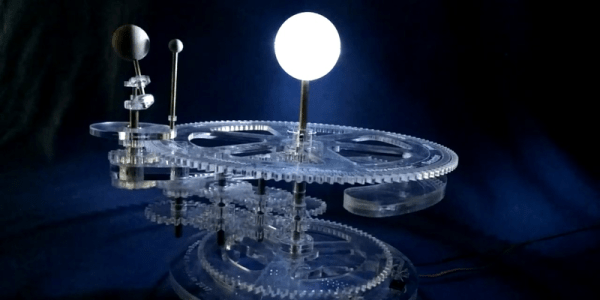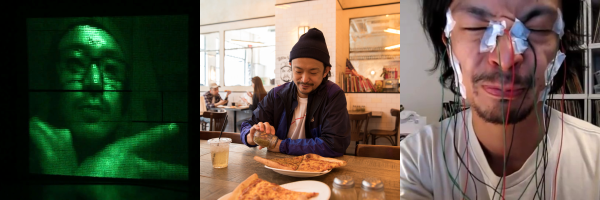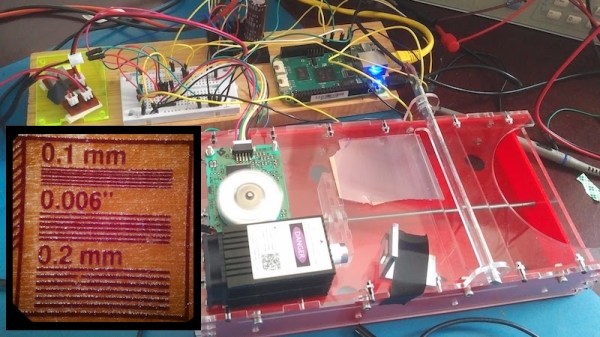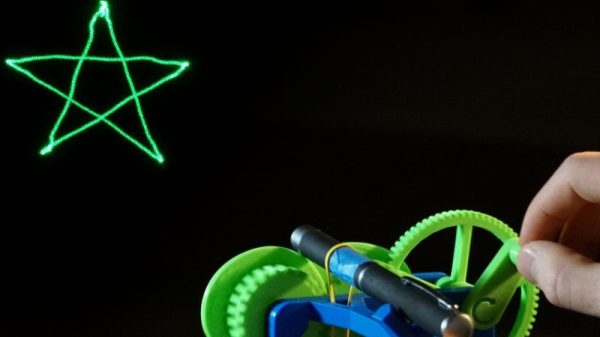An orrery is a clockwork model of the solar system, demonstrating the machinations of the planets traveling around the sun in a sublime pattern of epicycles. A tellurion is a subset of the orrery, showing the rotation of the Earth around the sun, and the orbit of the moon around the Earth. [HuidongT] created his own tellurion out of laser-cut parts and just a few bits of copper tubes and bearings.
This project was originally inspired by the holzmechanik, a tellurion constructed from plywood gears and brass tube. [HuidongT] saw a few shortcomings in this project: the Earth didn’t spin and the moon didn’t orbit with its natural five-degree inclination. [Huidong]’s tellurion would have these features and include an illuminated sun, demonstrate the change of the seasons, and show lunar and solar eclipses.
While there was a bit of math involved in figuring out the gearing, it’s not much: the Earth would go around the sun every 365.25 days, the moon would go around the Earth every 27.32 days, and there is a difference between sidereal and solar time. A quick script made quick work of the math, and anyone can easily find tools to create gears given a diameter and the number of teeth.
The fabrication of this tellurion was made with acrylic on a laser cutter with a handful of 3D printed parts. The electronics are simple enough — just a motor and a few LEDs, and the completed project works well enough. You can check out a video of the tellurium below.

















